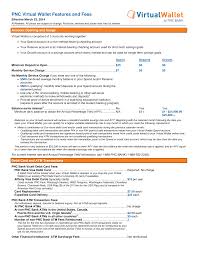
Buying a put is like taking out an insurance policy on your stock: you buy a put option when the price of the stock falls and then sell it when the price rises. You can buy as many puts as you like, but you should only purchase a certain number of them. It's a bearish strategy that costs $.25 to buy a put option. A put option protects you from price fluctuations by setting a floor price.
A sale is when you buy a put
A put is a contract which gives the buyer the right of selling a stock at a fixed price in the event that the stock's price falls below the strike price. The buyer can earn more money by waiting for the strike price to drop below it. A put is like selling shares. The buyer gets a premium if the stock falls. Like any other investment, a puts comes with similar risks and rewards. Investors can lose no more than the stock they purchase.
When buying a put, it is important to remember that the buyer has a right but no obligation to buy the underlying. A small fee can be paid by the buyer to purchase a put option. This will eliminate the risk that the buyer may lose more than the price for the underlying stock. On the other hand, the seller does not have the right to the option and will need to purchase the underlying stock at strike price regardless of its price.

A hedge strategy is buying a put.
Put options are one of the most common ways that you can hedge your portfolio. This type of hedging strategy allows you to limit the downside exposure of your portfolio. A put option will reduce the chance of your stock price being lost entirely. However, this strategy doesn't produce the same returns that buying in-the money stock. This does not mean you should avoid purchasing put options.
Puts are a reversible option that allows the purchase of stock at a fixed price for a set time. A put option's price is determined by the downside risk. This is the chance that the stock/index will decline in value. The shorter the expiration date, the less it will cost. A put option can prove to be very valuable if you are in a long position within a specific stock or index.
Buy a put is a bearish tactic
A Bearish strategy includes buying a put on a stock. Buying a put is similar to buying an insurance policy for a stock. A put can be purchased with option premium. But unlike an insurance plan, it does not limit its upside profitability. The stock's price must increase more than the premium paid for the put to make the put worthwhile. If the price increases are too small, the put trade can lose money.
This strategy can be used with stock, ETF, index, futures options, and other financial instruments. The calculation below does not include the commission charges, which are usually around $10 to $20. The commissions charged by an option brokerage may vary depending on which one you choose. However, bear spreads are a popular way of making money when stocks fall. You can make money buying put options on the stock you feel most bearish.

You can protect your floor price by purchasing a put
A put option is essentially an insurance policy. The most common type of put option is the protective one, and it costs $.25 The price you pay for one is the strike price plus the premium. This insurance policy protects you from losses if the stock's floor price falls below a certain point.
This type of insurance strategy involves taking a long open position on a stock and buying a put. The put must be sold at the strike price in order to protect the floor price. The floor owner earns from the difference between the long stock price and the floor price. The floor is usually more expensive than a call option. To protect the floor price, it is best to invest in a put option rather than a called option.
FAQ
What types of investments do you have?
Today, there are many kinds of investments.
These are some of the most well-known:
-
Stocks - Shares in a company that trades on a stock exchange.
-
Bonds – A loan between two people secured against the borrower’s future earnings.
-
Real estate - Property owned by someone other than the owner.
-
Options - These contracts give the buyer the ability, but not obligation, to purchase shares at a set price within a certain period.
-
Commodities: Raw materials such oil, gold, and silver.
-
Precious metals are gold, silver or platinum.
-
Foreign currencies – Currencies other than the U.S. dollars
-
Cash - Money deposited in banks.
-
Treasury bills – Short-term debt issued from the government.
-
Commercial paper - Debt issued to businesses.
-
Mortgages – Individual loans that are made by financial institutions.
-
Mutual Funds are investment vehicles that pool money of investors and then divide it among various securities.
-
ETFs (Exchange-traded Funds) - ETFs can be described as mutual funds but do not require sales commissions.
-
Index funds – An investment strategy that tracks the performance of particular market sectors or groups of markets.
-
Leverage - The use of borrowed money to amplify returns.
-
ETFs - These mutual funds trade on exchanges like any other security.
These funds have the greatest benefit of diversification.
Diversification is the act of investing in multiple types or assets rather than one.
This will protect you against losing one investment.
Is it possible to make passive income from home without starting a business?
It is. In fact, the majority of people who are successful today started out as entrepreneurs. Many of them had businesses before they became famous.
You don't necessarily need a business to generate passive income. Instead, you can simply create products and services that other people find useful.
Articles on subjects that you are interested in could be written, for instance. Or, you could even write books. Consulting services could also be offered. Only one requirement: You must offer value to others.
How can I tell if I'm ready for retirement?
The first thing you should think about is how old you want to retire.
Is there a specific age you'd like to reach?
Or would it be better to enjoy your life until it ends?
Once you have set a goal date, it is time to determine how much money you will need to live comfortably.
Then, determine the income that you need for retirement.
You must also calculate how much money you have left before running out.
What should I look for when choosing a brokerage firm?
When choosing a brokerage, there are two things you should consider.
-
Fees - How much commission will you pay per trade?
-
Customer Service - Will you get good customer service if something goes wrong?
You want to work with a company that offers great customer service and low prices. This will ensure that you don't regret your choice.
Statistics
- According to the Federal Reserve of St. Louis, only about half of millennials (those born from 1981-1996) are invested in the stock market. (schwab.com)
- Most banks offer CDs at a return of less than 2% per year, which is not even enough to keep up with inflation. (ruleoneinvesting.com)
- They charge a small fee for portfolio management, generally around 0.25% of your account balance. (nerdwallet.com)
- Some traders typically risk 2-5% of their capital based on any particular trade. (investopedia.com)
External Links
How To
How to invest stocks
Investing is one of the most popular ways to make money. This is also a great way to earn passive income, without having to work too hard. There are many ways to make passive income, as long as you have capital. It's not difficult to find the right information and know what to do. This article will help you get started investing in the stock exchange.
Stocks are shares that represent ownership of companies. There are two types. Common stocks and preferred stocks. While preferred stocks can be traded publicly, common stocks can only be traded privately. Stock exchanges trade shares of public companies. They are valued based on the company's current earnings and future prospects. Stocks are bought to make a profit. This is known as speculation.
There are three key steps in purchasing stocks. First, you must decide whether to invest in individual stocks or mutual fund shares. The second step is to choose the right type of investment vehicle. The third step is to decide how much money you want to invest.
Select whether to purchase individual stocks or mutual fund shares
Mutual funds may be a better option for those who are just starting out. These portfolios are professionally managed and contain multiple stocks. When choosing mutual funds, consider the amount of risk you are willing to take when investing your money. Mutual funds can have greater risk than others. You may want to save your money in low risk funds until you get more familiar with investments.
You should do your research about the companies you wish to invest in, if you prefer to do so individually. Before you purchase any stock, make sure that the price has not increased in recent times. You don't want to purchase stock at a lower rate only to find it rising later.
Choose the right investment vehicle
Once you have made your decision whether to invest with mutual funds or individual stocks you will need an investment vehicle. An investment vehicle is simply another method of managing your money. You could place your money in a bank and receive monthly interest. You could also establish a brokerage and sell individual stock.
A self-directed IRA (Individual retirement account) can be set up, which allows you direct stock investments. Self-Directed IRAs are similar to 401(k)s, except that you can control the amount of money you contribute.
Your investment needs will dictate the best choice. You may want to diversify your portfolio or focus on one stock. Do you seek stability or growth potential? How comfortable do you feel managing your own finances?
The IRS requires that all investors have access to information about their accounts. To learn more about this requirement, visit www.irs.gov/investor/pubs/instructionsforindividualinvestors/index.html#id235800.
Find out how much money you should invest
You will first need to decide how much of your income you want for investments. You can put aside as little as 5 % or as much as 100 % of your total income. The amount you choose to allocate varies depending on your goals.
If you're just starting to save money for retirement, you might be uncomfortable committing too much to investments. For those who expect to retire in the next five years, it may be a good idea to allocate 50 percent to investments.
It's important to remember that the amount of money you invest will affect your returns. So, before deciding what percentage of your income to devote to investments, think carefully about your long-term financial plans.